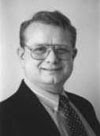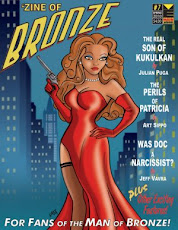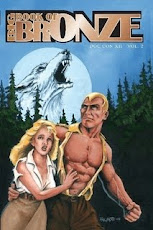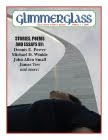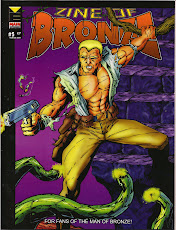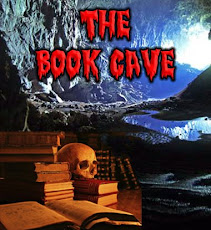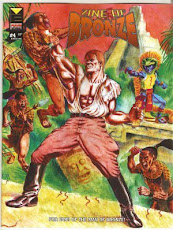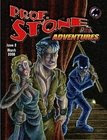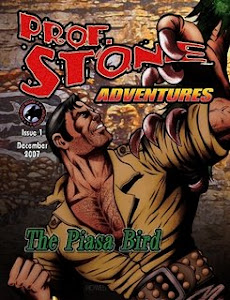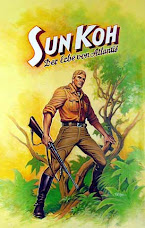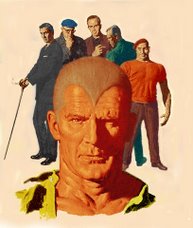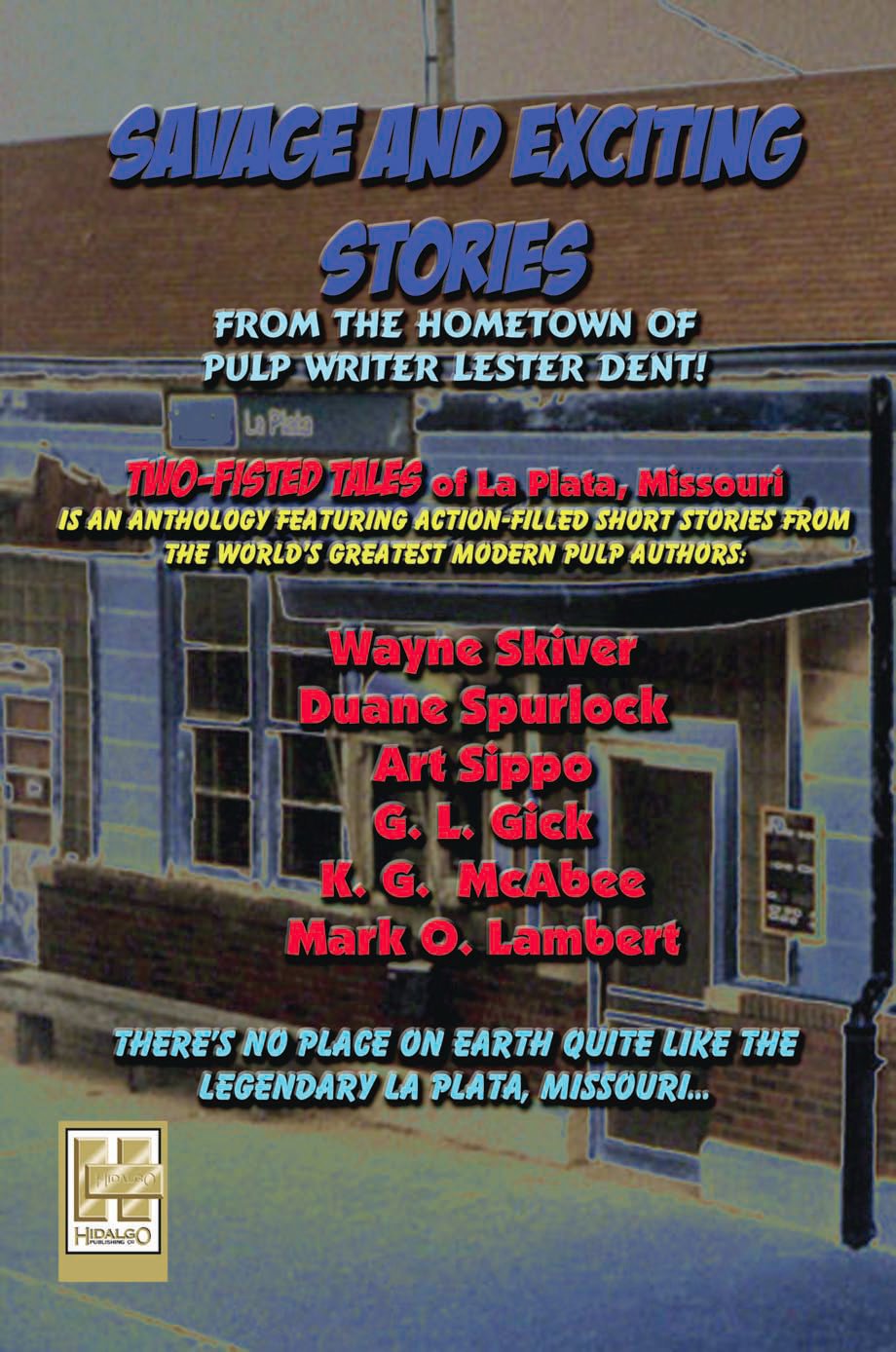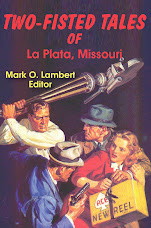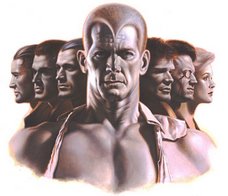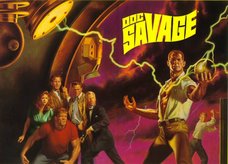
The New Pulp Revival continues! Professional author, playwright and educator Martin O'Hearn has written a pulp superhero novel The Terrible Troll which is currently available for the Kindle on Amzaon.com and soon will be out in other formats through Smashwords. Martin graciously accepted my invitation to do a Q&A interview about his new book.
Hello Martin! I have some questions about you and your new book.
1) Tell us a little about yourself and the work you have done.
I've spent three months a year for the last few decades out on the road as, most often, lighting operator on national tours to middle school audiences. The plays presented classic stories from Poe, Twain, Saki, and other authors famous for horror or humor. I was also one of the playwrights adapting stories like The Lady or the Tiger, The Most Dangerous Game, and The Monkey's Paw. The audience numbers have added up into the seven figures by now. Wish I'd gotten royalties instead of flat fees!
2) You recently released a pulp superhero novel, The Terrible Troll.
a. Please describe the story
Robin Pace has come to New York in 1937, and, like Harry Vincent in The Living Shadow, she's caught up in the fight between villain and hero. The Troll, Günther Grieg, is using a strange apparatus to walk through walls (and more) in pursuit of a devastating secret.
King Hudson and his five companions fought Grieg in 1936, on a battlefield of the Spanish Civil War. In testing Nazi weaponry, the Troll gained the power to destroy men's minds; only two out of seven walked away from the battle. Now King recruits Robin in chasing Grieg and his stolen secret documents from New York to Germany by way of the zeppelin Hindenburg.
By the time they reach Grieg's castle on the Rhine, Robin's barely escaped death by gunshot, arson, and fall from airship.
And this is where, as per Lester Dent's Master Plot, the heroes "get it in the neck bad."
b. Describe your pulp hero King Hudson
You'd mistake him in a dark alley for Richard Henry Benson, not Clark Savage, Jr. He infuriates the viewpoint character, Robin, because he can do just about anything and he's not at all modest about it. He's pretty much a magician pulling abilities and talents out of his hat as the situation calls for them--until the Troll outthinks him.
The biggest mystery of the story is King Hudson. Who, exactly, is he? Where did he get all those powers? What is his connection to the Troll?
c. What inspired you to write the story?
Doc Savage and Lester Dent. Troll, by the way, was one word left over after Goblin, Ogre, Devil, Spook, Ghost, Elf, and Monster in the original Doc titles.
d. Where did you get the idea for King Hudson?
By a very roundabout manner, out of the science fiction novel The Creature from Beyond Infinity by Henry Kuttner. But that involves the mystery I mentioned; I can't go into detail without giving something away. It did give me a way to rework Doc Savage, his Fabulous Five, and Pat Savage into the basis for new characters.
3) What were your favorite Pulp characters?
In the order in which I discovered them in reprint as a teenager: Doc Savage, The Shadow, The Spider, Captain Future, The Phantom Detective, and G-8. The Avenger, Operator 5, and so on, joined the list later.
4) Who are some of your favorite authors, pulp and otherwise?
Edgar Rice Burroughs; then the majority of those being published or reprinted in science fiction, mystery, and adventure paperbacks in the Sixties (including Dent, Gibson, Page, and the others, of course). Golden Age and Silver Age comic book writers like Jerry Siegel, Bill Finger, Edmond Hamilton, Gardner Fox, John Broome, and writer/artist Jack Kirby. A couple of writers whose new stuff I've never missed in decades: Stephen King and Dick Francis.
5) Are you intending to visit any of the Pulp conventions?
No; my first few comics conventions were plenty.
6) Will there be more King Hudson stories?
7) If so any hints on what is coming up for King Hudson?
8) Do you have other stories planned for publication?
The (fictional) history of the Terrible Troll manuscript answers those questions: it was written by a young comic book writer in 1945 as he tried to crash the slightly-more-prestigious pulp market. Unfortunately, he'd written a 1930s science fiction-style epic when editors wanted sophisticated detective stories. And Troll was pretty much a standalone novel; it left nowhere for a series to go. The manuscript lay abandoned in a trunk for over sixty years.
The next novel I'm planning has that writer enmeshed in a crime plot as he returns to comic book writing after World War II. I'd actually written the story in which he begins his career in 1938--then The Adventures of Kavalier and Klay came out.
9) Are there any other things you want to tell the fans about? (Opportunity for a few shameless plugs!)
I hope to start blogging soon, about crediting old comic books' writers and artists. My website will link to the blog. Eventually my article for Alter Ego on telling apart the writers of the Superman stories of the early Sixties, commissioned by Roy Thomas and delivered a while ago, should be published.
10) Please provide us with internet links
a. for your website
http://www.martinohearn.com/
b. Where the fans can get your book
It's $2.99. For the Kindle, at Amazon:
http://www.amazon.com/gp/product/B0058IZSOC
In a few weeks, Smashwords will be distributing Troll to retailers like Apple and Barnes & Noble. Smashwords itself already sells the novel in the various ereader formats, for upload onto Kindle, Nook, iPad, and the rest:
http://www.smashwords.com/books/view/71903
The free sample at Smashwords, where I could set it at 30% rather than Amazon's 10%, takes the reader to a major plot point that I sidestepped mentioning above, in avoiding a spoiler.
Martin, thank you for coming on my blog. I know that pulp fans will really enjoy The Terrible Troll. I wish you good luck with this and future endeavors. And thanks for being part of the New Pulp Revival.







































